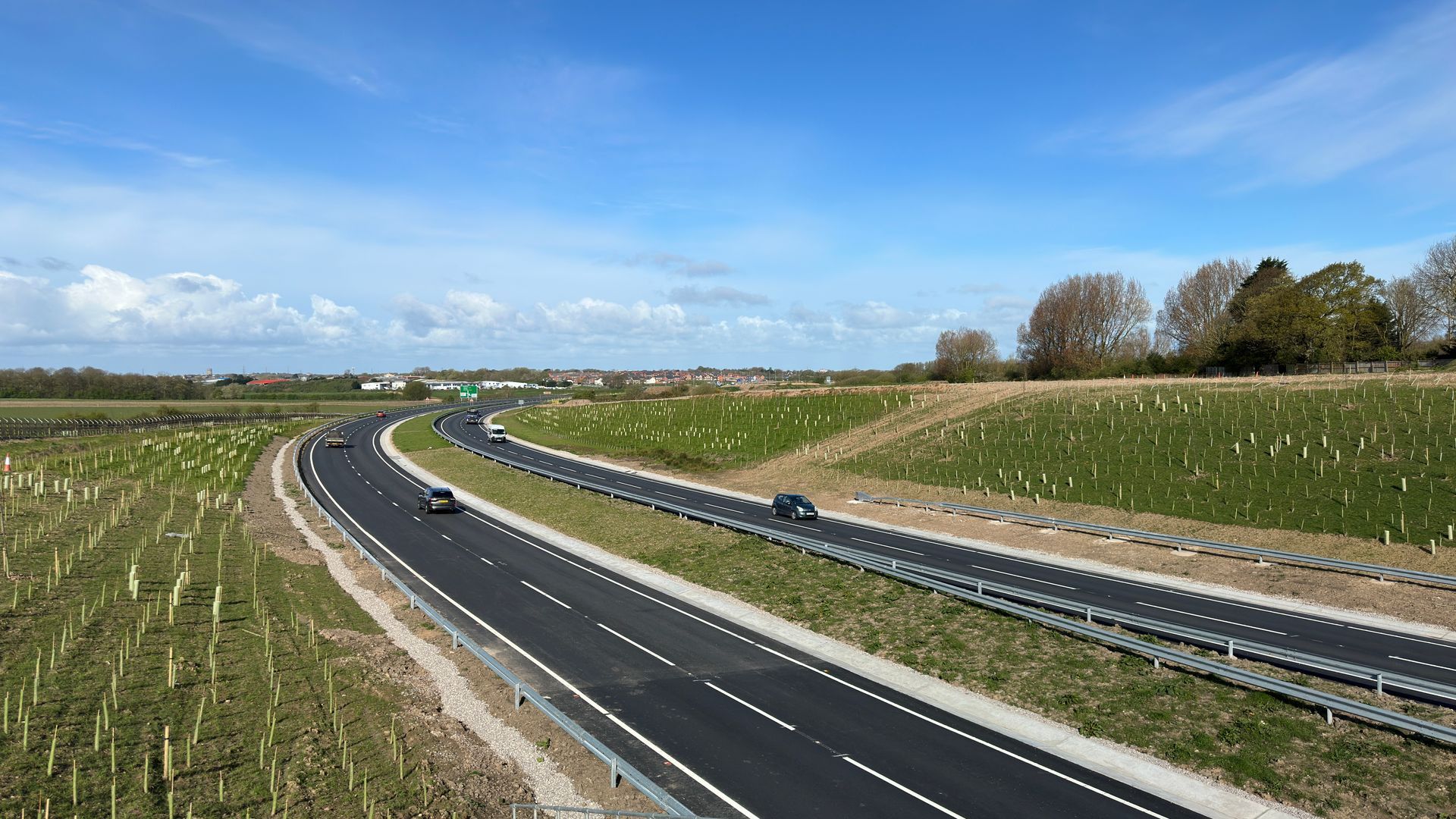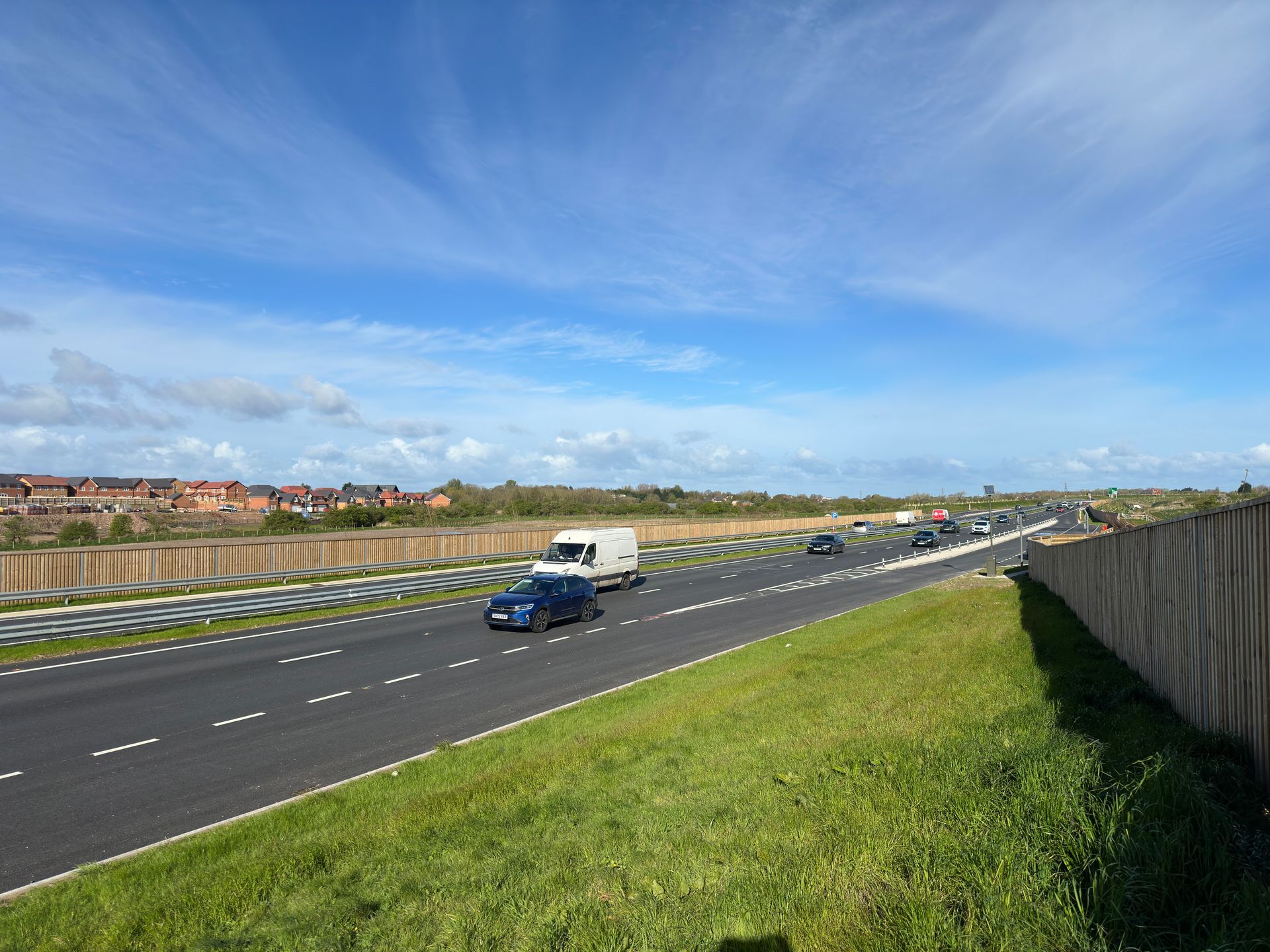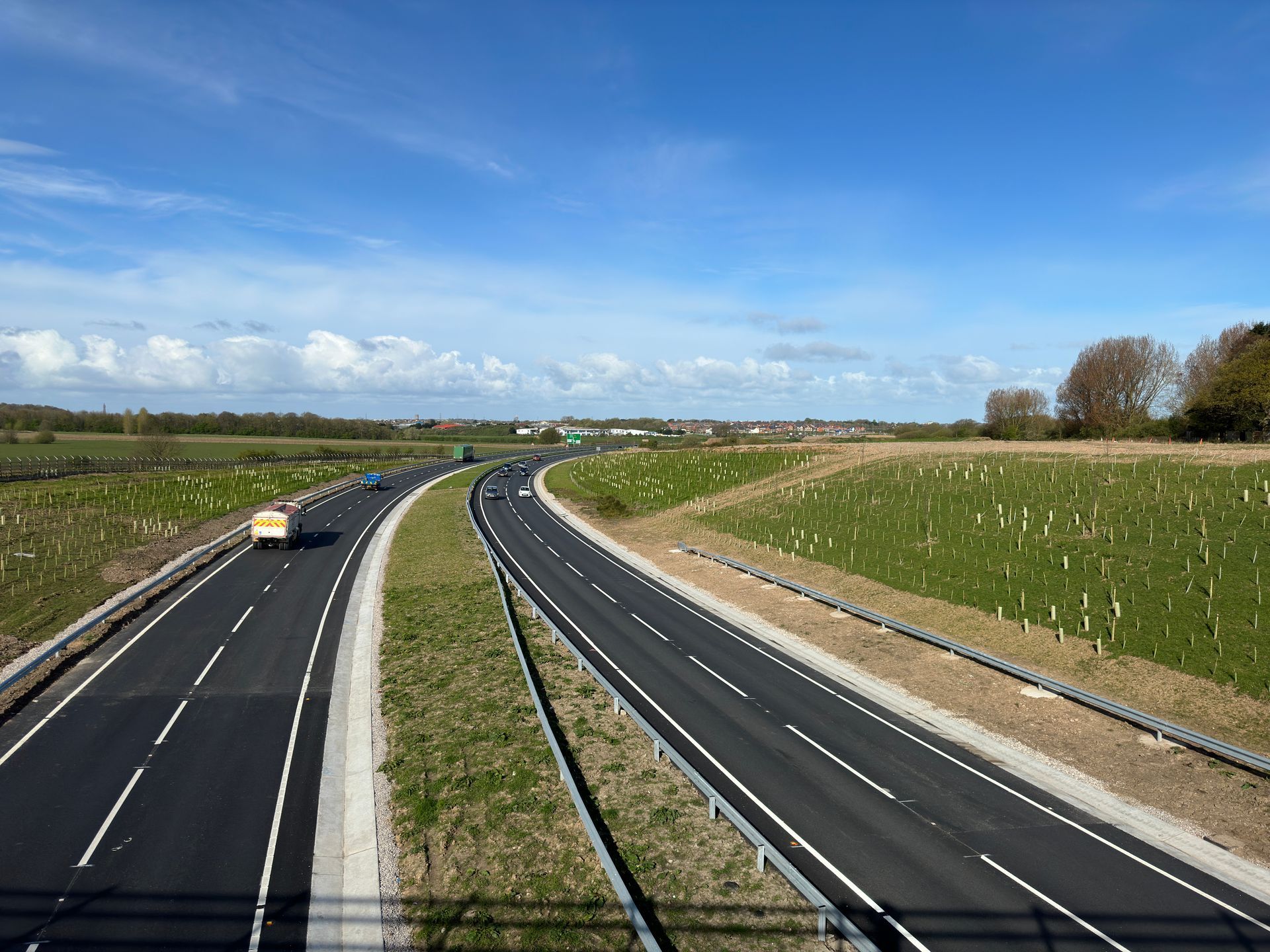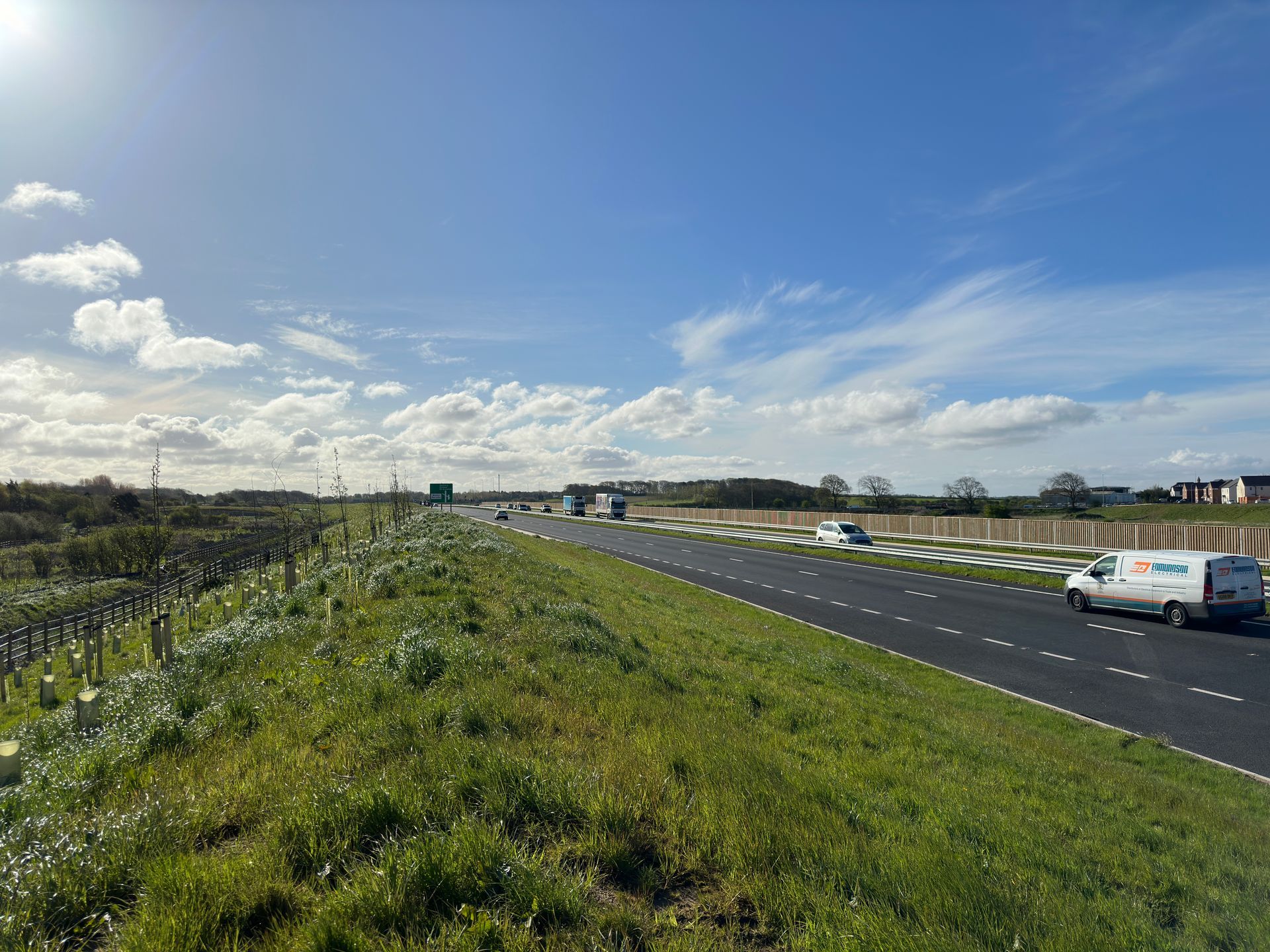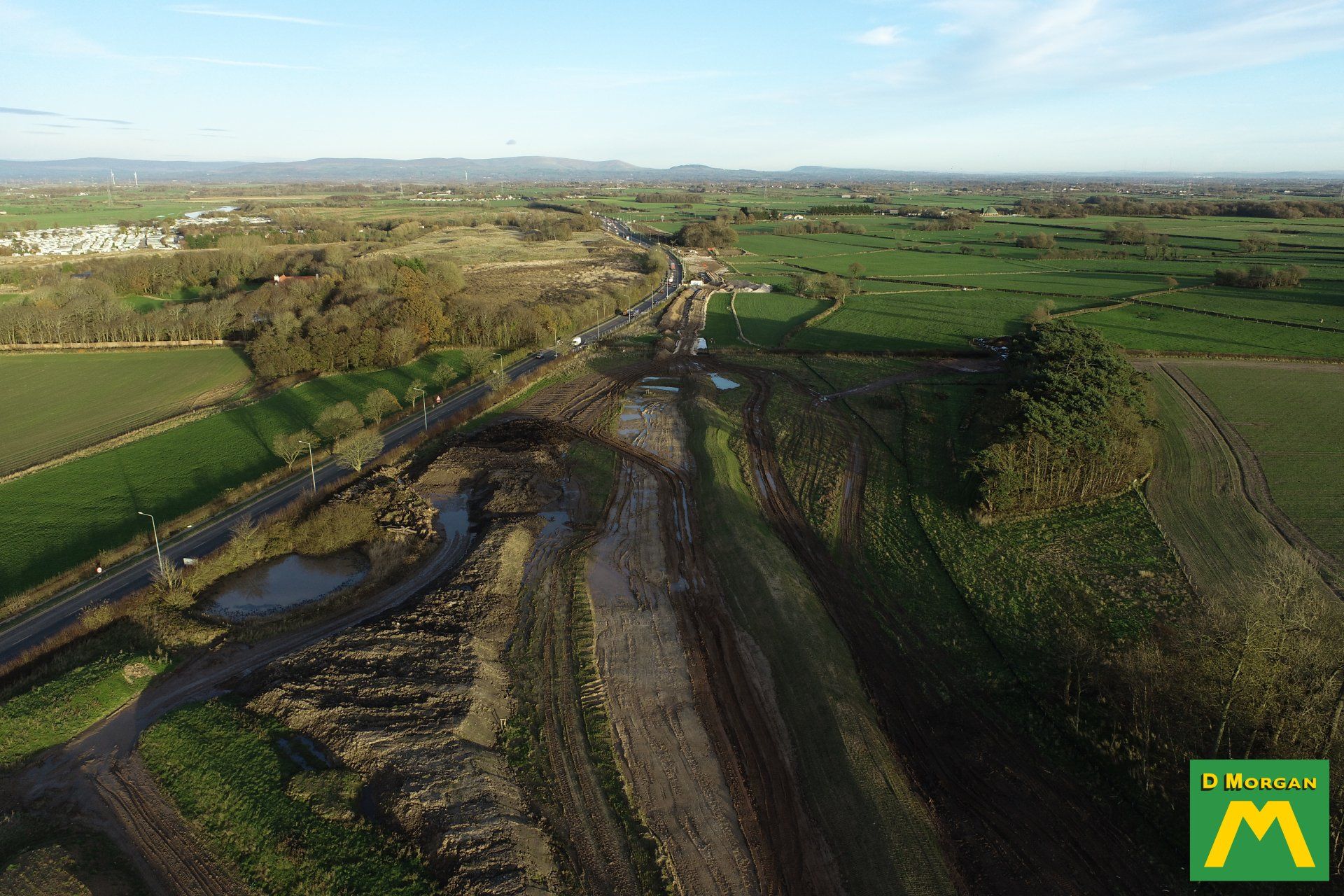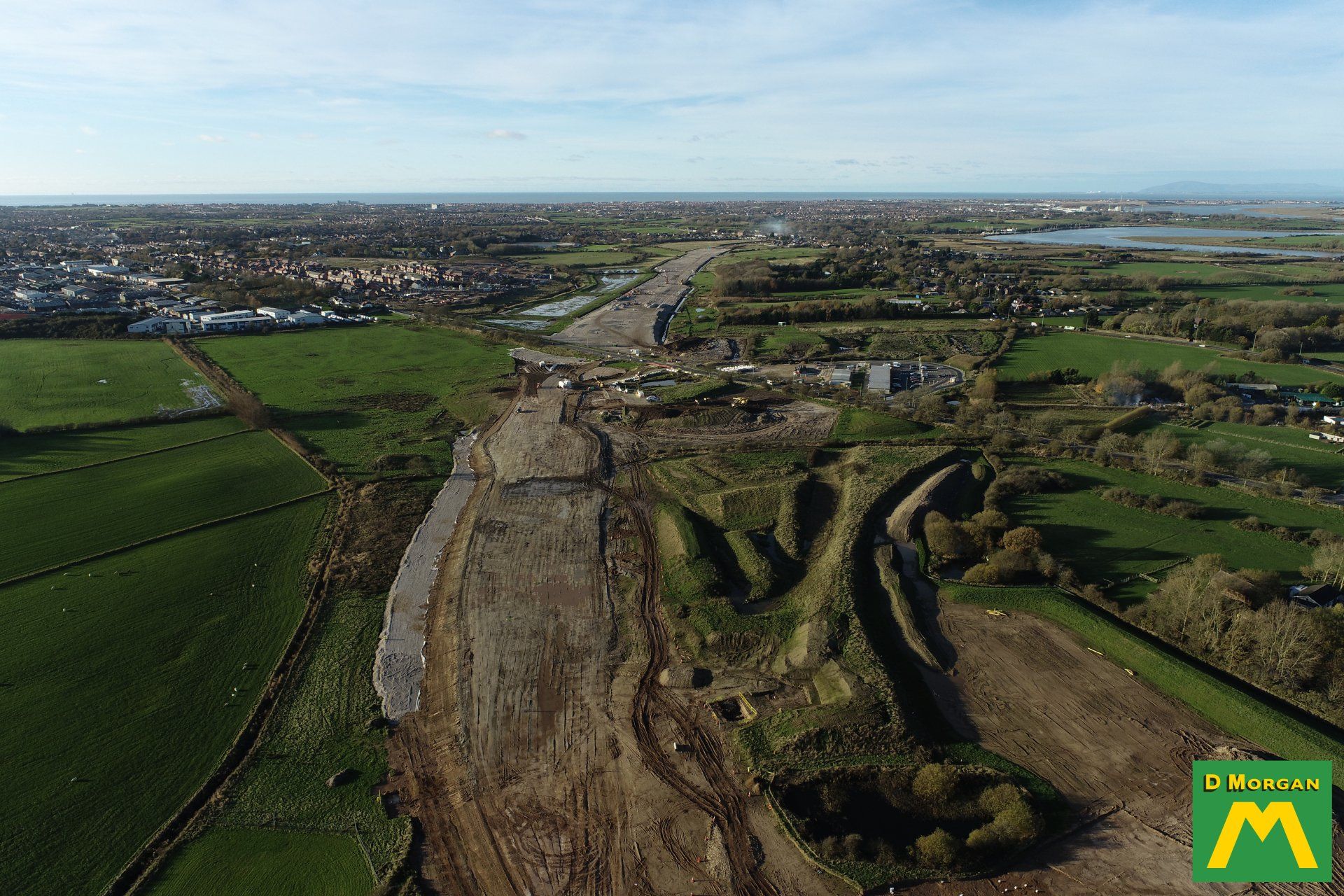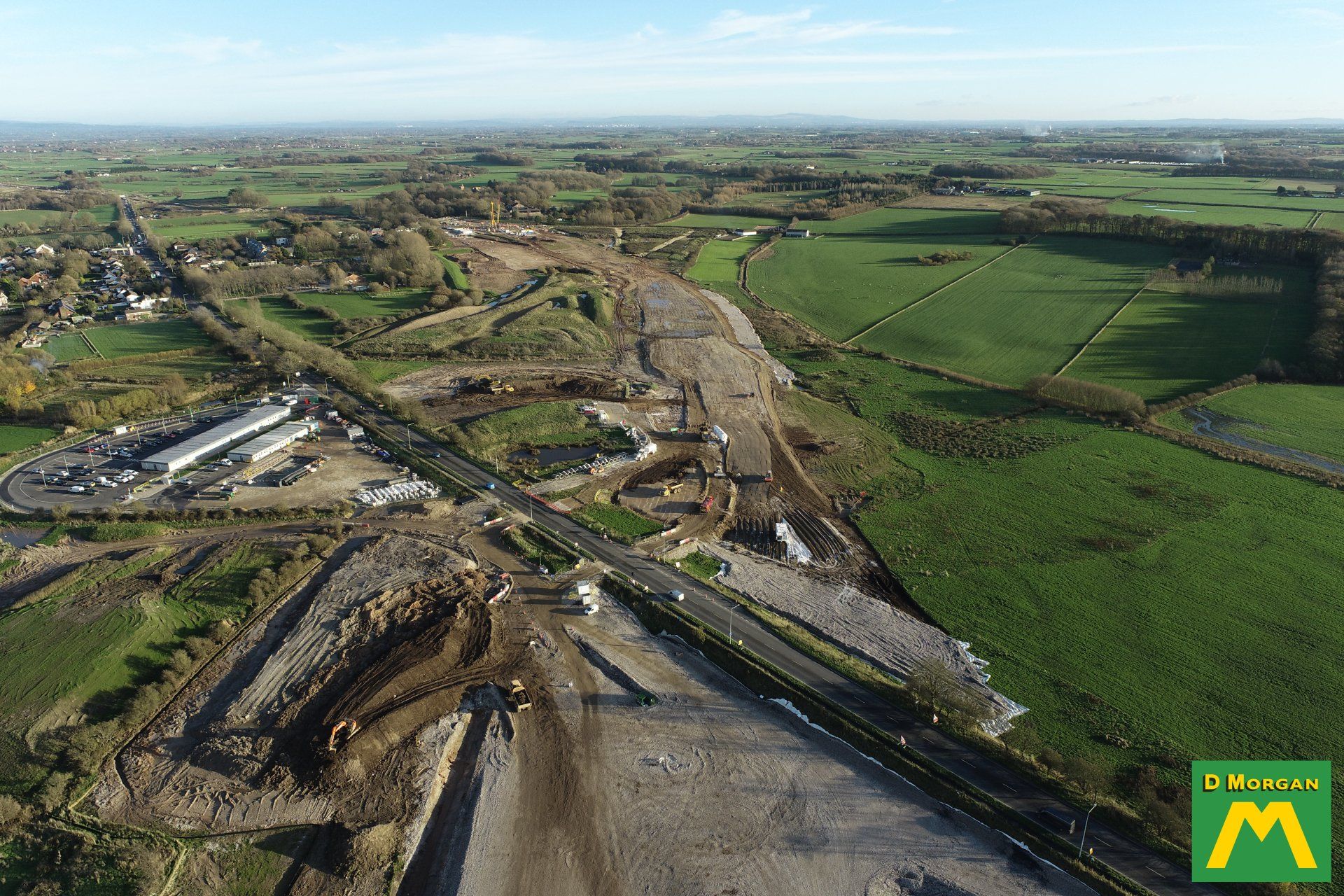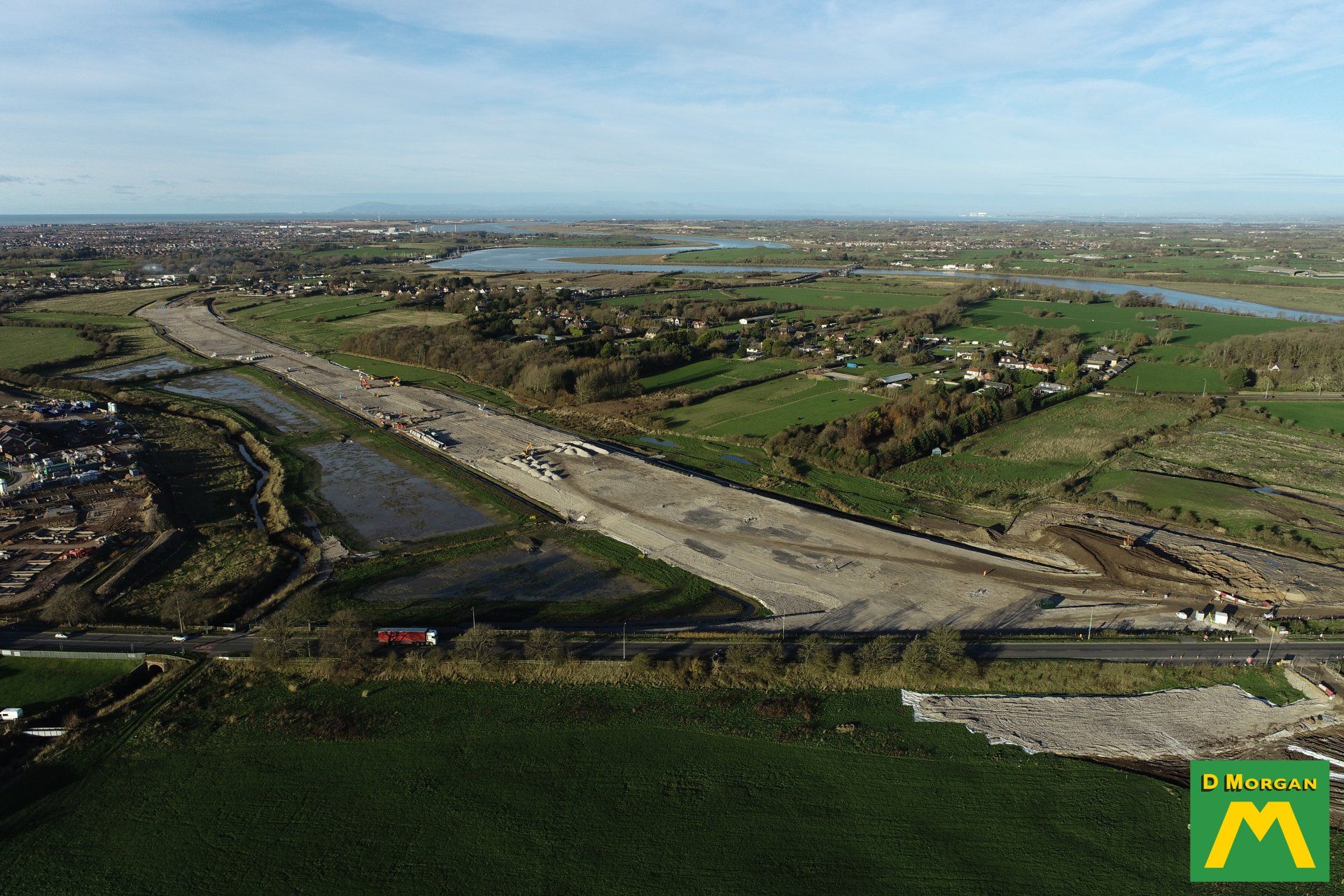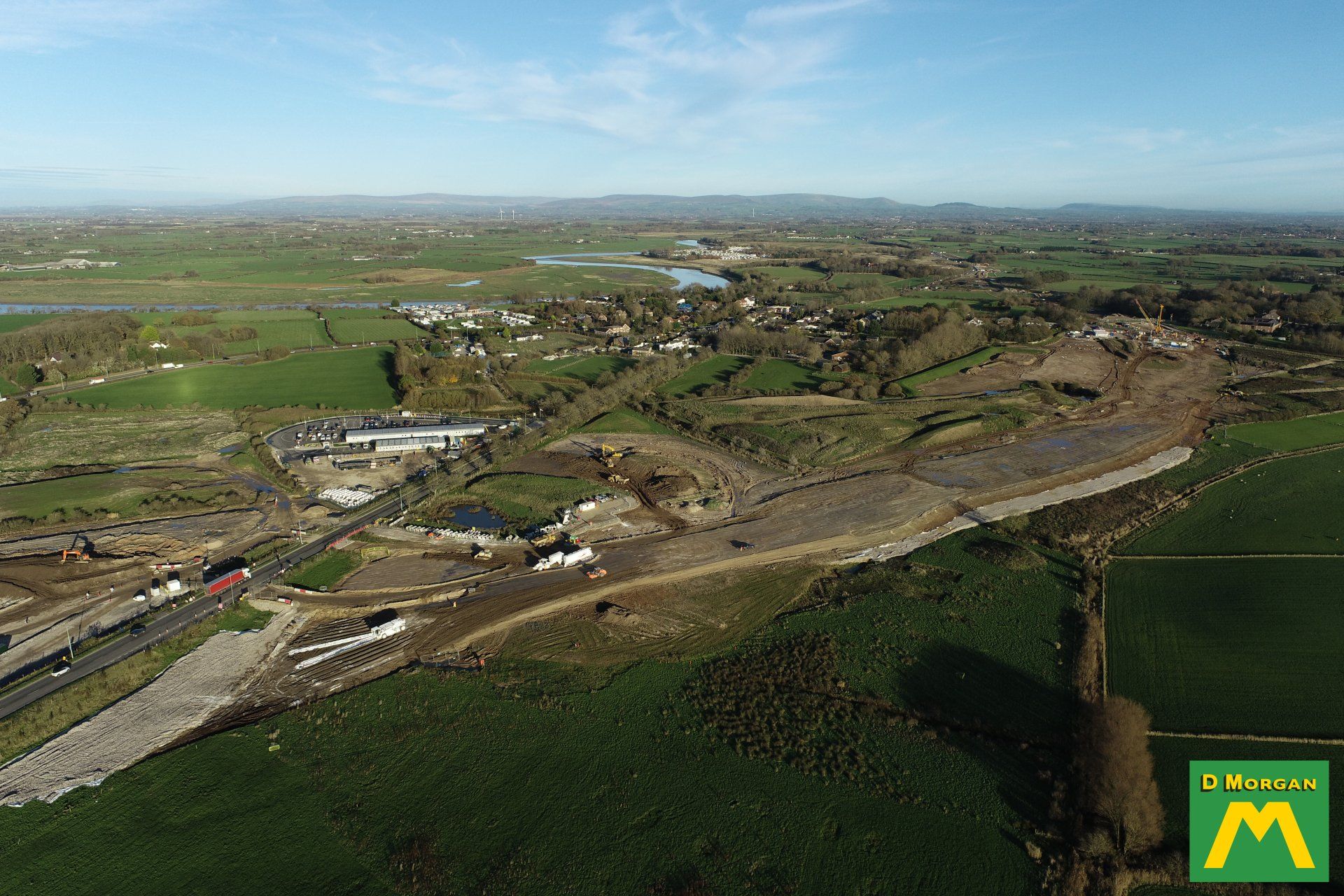A585 Windy Harbour to Skippool
Location: Windy Harbour, Lancashire
Value: £11m
Role: Alliance Partner
Earthworks for the new 5km Link Road
Major Development Project:
The new A585 Windy Harbour to Skippool bypass in Poulton-le-Fylde, built around the village of Little Singleton, is now fully open to traffic. Approximately three miles of new road has been added around the village, bringing much-needed capacity to deliver smoother and more reliable journeys.
The bypass will reduce congestion and improve safety, while removing a major bottleneck on the main road to Fleetwood and combating the heavy traffic that traditionally builds between Windy Harbour and Skippool during peak traffic hours.
As the Lead Earthworks Partner to the Staffordshire Alliance, D Morgan undertook the following:
- £1m Compound Installation: Earthworks, Drainage, Outfall Lagoon, Concrete Slabs, Foundations, Fencing, Street Lighting, S278 Works for connection to main road
- Haul roads
- Multiple attenuation ponds
- 6C Drainage blanket, 140,000 tonne imported and placed
- Geotechnical testing for the entire earthworks scope
- Bulk Earthworks - Cut & Fill
- Ground Stabilisation in fill areas
- Excavation for structures
- Installation of piling/working platforms
- Installation of capping
- Topsoil landscaping to embankment slopes
Our Involvement as Alliance Partner:
D Morgan provided their GNSS Machine Control fleet to undertake the works, including excavators, dozers, and rollers. This innovative approach allowed them to place material or cut to the specified levels utilising the latest technology in machine control following the design profile contained with the project 3D model. This allowed the most efficient methodology which minimised waste and ensured a high-quality finish to the required tolerances within the required timescales and budget. An additional innovation D Morgan carried out an initial drone-based LIDAR survey in order to validate the expected existing ground levels and anticipated volumes of material to be excavated, this was supported by more detailed topographical surveys once each work area was opened up.
An added constraint was the presence of the existing Garstang Road that remained open to the public and split the site effectively in two. This required careful control of material movements to minimise the amount of material needed to be transported to either side of the existing road, reducing the number of plant movements and interface with the travelling public. They set up each area with an independent team with an overarching management structure which allowed materials deliveries and other interfaces to be planned by each respective team focussing on their own area.
The main embankment of the scheme at 1.3km long is situated within a low-lying flood plain adjacent to an existing watercourse, this presented many challenges. The existing ground was extremely soft and contained large pockets of peat. The geotechnical design for the embankment included the excavation of 30,000m3 of peat that was replaced with imported 6C, groundwater pumping was required as the peat had a flow of groundwater, the works were undertaken progressively to allow all machines to work off the 6C backfill.
Other areas required an imported 6C drainage blanket, band drains and then surcharged for the required settlement period. Some 140,000T of 6C was imported working alongside the band drainage contractor. Above the 6C, circa 200,00m3 of Class 2 site won fill was placed to construct the embankment with some 60,000m3 of surcharge placed on top. As part of the earthworks mass haul solution D Morgan determined that a borrow pit was required to win the surcharge material and once the settlement was complete this could be backfilled with the same surcharge material following removal. This enabled the earthworks to progress in the other areas of the scheme during the settlement period. The embankment works were subject to a Flood Risk Activity Permit (FRAP). Granting of the permit was late which delayed at the start of the project. To mitigate this, D Morgan imported large volumes of 6C which were stockpiled outside the flood risk areas. This allowed an accelerated programme of placement without the restriction of import speed once the FRAP was granted.
D Morgan analysed the material characteristics in each area alongside the other elements of the programme to determine which scope was less susceptible to weather and seasonal constraints. This allowed the most efficient sequencing of the project which maximised the amount of continual working that could be carried out. The constraints were such that a winter break in earthworks activities was unavoidable in order to protect the integrity of the project. For example, there was a significant amount of peat on site which contained ground water, these elements were only delivered during the drier months. This also allowed for import and stockpiling of aggregates for the embankment drainage and road construction to be carried out during the winter months, allowing for optimum production outputs without being constrained by delivery rates that could be achieved by the local quarries.
D Morgan’s UKAS accredited lab (TD Testing) undertook the earthworks testing in a timely manner to allow pre-classification at point of excavation and verification testing at point of deposition. The materials encountered on site were highly variable and well managed materials management was always required as some of the material had to be deposited in separate stockpiles for treatment (lime stabilisation) while acceptable fill was utilised directly within the fill areas.
Processing of unacceptable material created by glacial deposits was achieved by excavation and re-compaction of the material in the same location.
All tests and inspections were carried out in accordance with the Specification and documents listed under section S2705 – Contractor’s work specification and S2710. In addition, D Morgan worked in accordance with the Kier Inspection & Test Plan Procedure.
D Morgan provided waste transfer documents and material delivery tickets to Kier Infrastructure.
On this large earthworks project we undertook careful surface water management due to on-site sensitive watercourses. That involved the use of temporary ditches, settlement lagoons, extensive silt fencing, construction of treatment lagoons with silt curtains/silt mats and the use of flocculants to treat water prior to discharge into the on-site watercourses. This was all carried out under the discharge permit obtained from Environment Agency.

